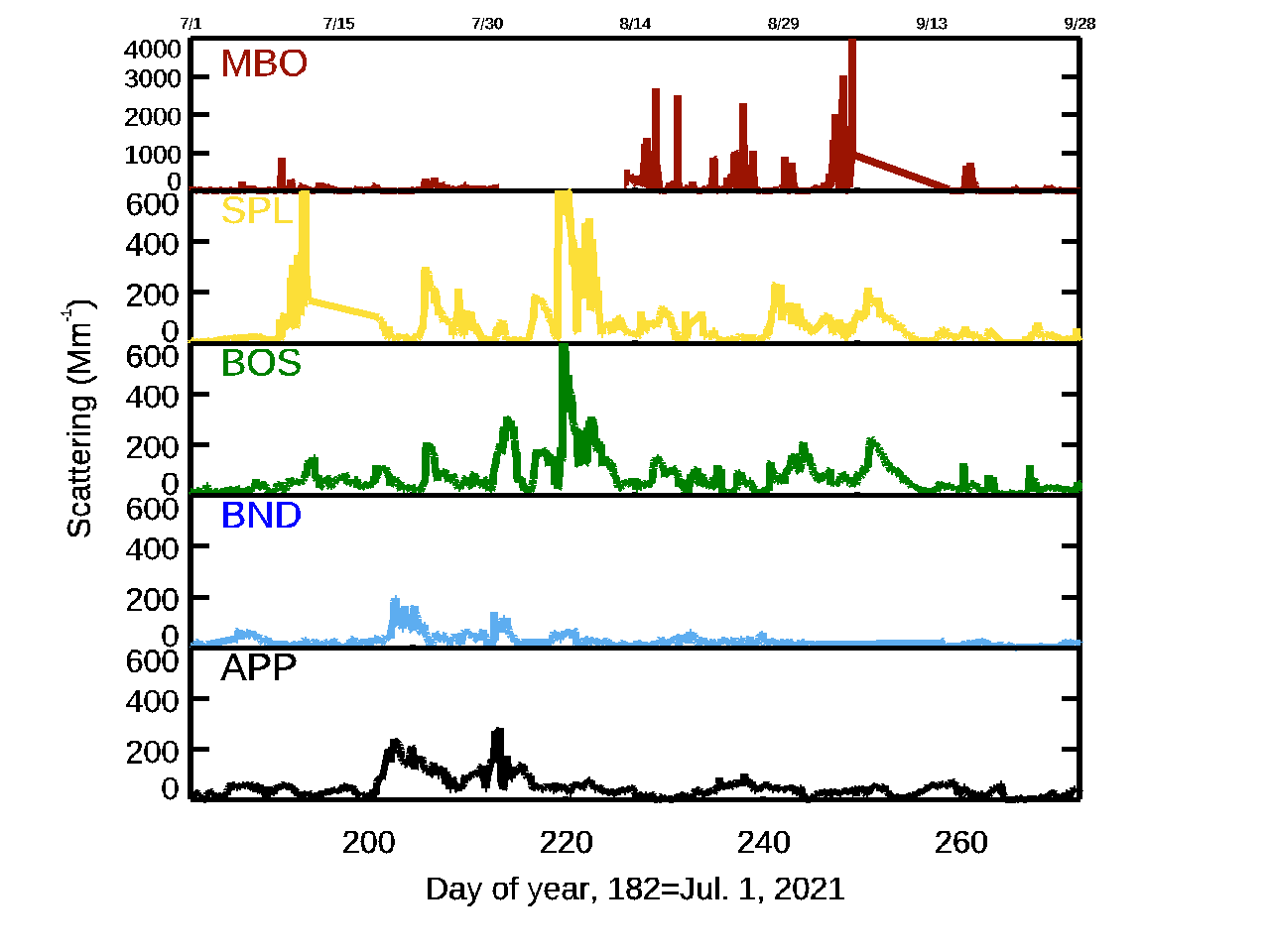Like 2020, 2021 is turning out to be an intense year for wildfires in the western US. Continued drought and high temperatures are driving factors in the conflagrations. The destructive force of these fires causes the loss of homes and has the potential for tragic loss of life near the source. Additionally, smoke transported downwind from the fires can also cause health issues and visibility degradation hundreds to thousands of miles away.

Green line is aerosol scattering measured during the various fire events at the Table Mountain (BOS) observatory near Boulder.
We estimate particle mass concentration (right axis) using a mass scattering coefficient of 3 m2/g.
Purple line is typical summertime conditions in Boulder. The first increase in aerosol loading occurs around July 11 (DOY 192)
and is due primarily to the Bootleg fire. The values oscillate but remain above typical and gradually increase with time.
The very large increase in aerosol particles observed on August 7 (DOY 219) at the Table Mountain site is likely from
multiple fires burning on the west coast of the US, including the Dixie fire in CA and the Bootleg fire in OR.
In southern Oregon the Bootleg fire began on July 6, 2021. Smoke from this fire was observed as far away as the US east coast degrading air quality 3000 miles away from the source. The transported smoke was also detected at several NFAN stations as it made its way east across the continental US.
Another fire - the Dixie fire - in northern California started a week later (July 13) and is now the largest (as of August 11) fire in CA history. The Bootleg fire in combination with the Dixie fire have resulted in high smoke burdens across the west causing Denver to have some of the worst air quality in the world during the peak of the event.
Smoke from Canadian fires, particularly in British Columbia, is now impacting the Northwest US and is being sampled by the Mount Bachelor NFAN site, causing some of the highest aerosol scattering ever measured at that site.

Time series of aerosol scattering coefficient at 5 NFAN sites across US:
MBO (Oregon), SPL and
BOS (Colorado), BND (Illinois)
and APP (N. Carolina).
(Data are raw - they have not been quality controlled or had standard corrections applied.)
Analysis of the aerosol and gas data from the Table Mountain site in Boulder in conjunction with observations from other NFAN sites may provide insight into how smoke ages with transport as well as a better understanding of the radiative and air quality impacts of wildfire smoke.
Additional information on the wildfire impact on GML observations in Boulder will be added here as fire season continues.
